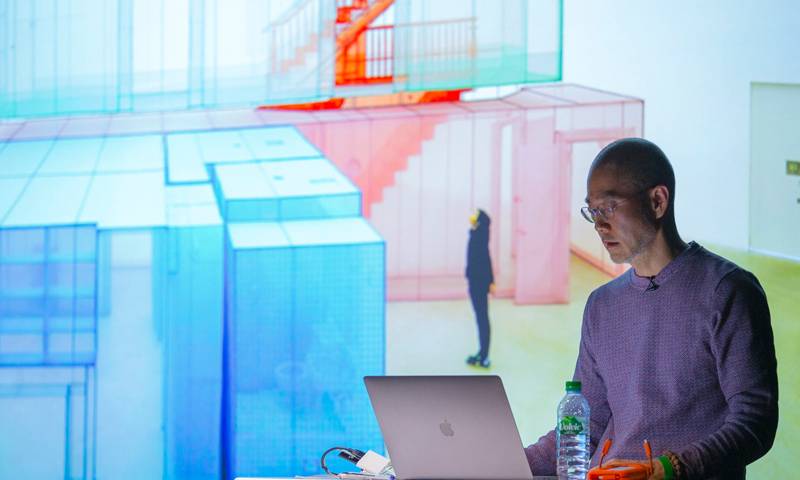Trio of symposia explores situated practice in contemporary art, architecture and urbanism.

‘Gateway’. ‘Periphery’. ‘Border’. These were the three locations that made up ‘Edge’, three day-long symposia organised by UCL Urban Laboratory as part of Folkestone Triennial 2017.
The events brought together practitioners and thinkers to consider creative place-making, arts-led urbanism and the use of interstitial spaces in the city. An ‘edge location’ was defined as: “where an area that is known or privileged meets another that is unknown or ignored; a point of balance between contrary or diverse phenomena; a place of connectivity and interaction.” Appropriately for Folkestone Triennial, the chosen sites were connected by the High Speed 1 (HS1) railway.
Artist Jeremy Deller gave the opening address at ‘Gateway’. This was held at UCL’s Gower Street Campus, which was built on the urban/rural edge of 19th-century London – a gateway to learning – abutting King’s Cross – a transport gateway.
At Here East on the Queen Elizabeth Olympic Park, artists Jill Magid and Do Ho Suh presided over ‘Periphery’. With Here East, this previously neglected area of Stratford is now home not only to a park but a cluster of innovators and makers – including The Bartlett.
Architect Friedrich Ludewig gave the keynote presentation at Quarterhouse, Folkestone, the littoral edge of South-East England, and the location for ‘Border’. From 1842 to 1992, Folkestone was a major pivot for passenger transport between France and England. With the construction of HS1, it has been given the questionable status of a London dormitory suburb.
Edge was curated by Lewis Biggs, of Folkestone Triennial, James O’Leary, Programme Director of The Bartlett School of Architecture’s new Master’s in Situated Practice, and Kieren Reed, of the UCL Slade School of Fine Art.
 Close
Close

